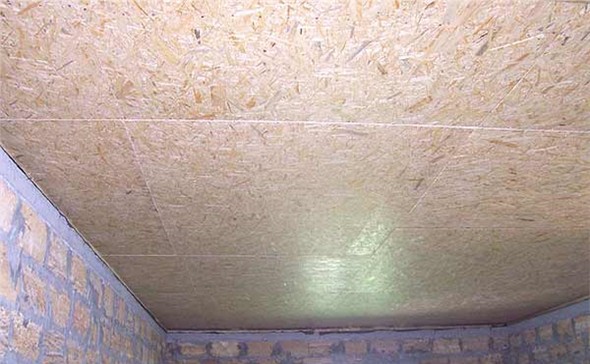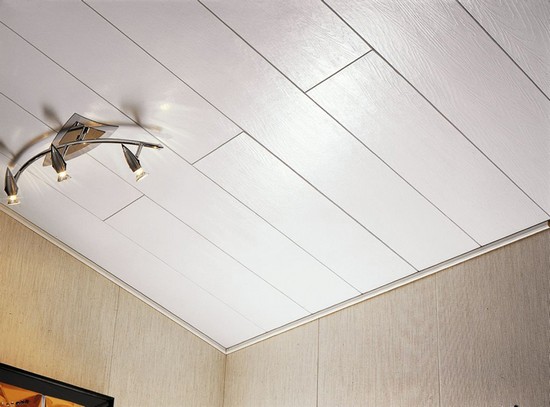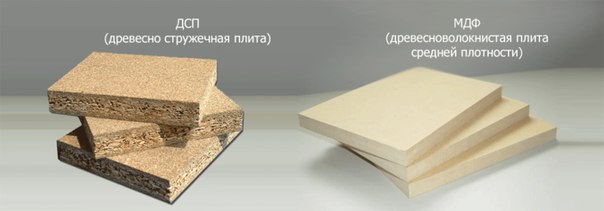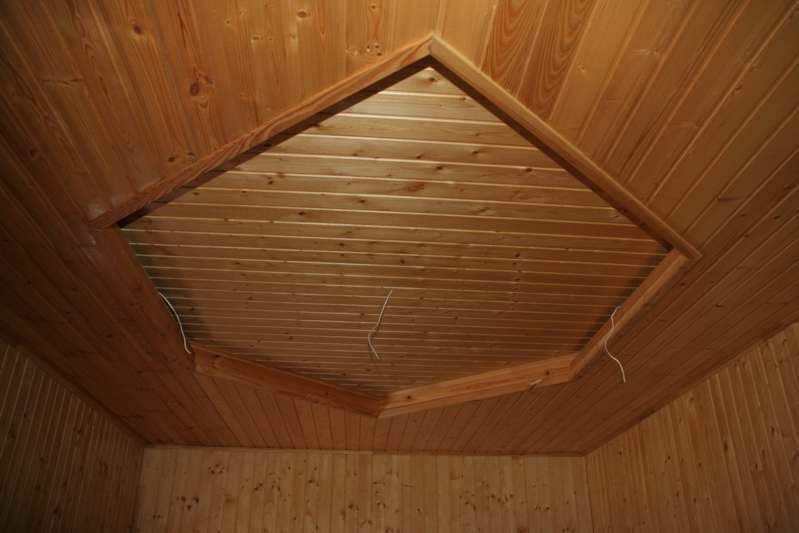The hemmed ceiling is now even more popular than the whitewashed one in the old days. To date, materials that can sheathe the ceiling in the markets and in stores are just a huge amount. Everything can be found - both plastic, and wood, and under a tree, and plasterboard, up to steel plates and under a brick. When choosing a material, a large number of questions arise - cost, durability, rationality, aesthetics, and so on. We still offer to figure out how to hem the ceiling will be better. However, in this article we will review the options for finishing the ceiling and give the characteristics of the materials, their advantages, which justifies the choice and, of course, the existing disadvantages. We will talk about installation technologies a little later.
General information on sheathed ceilings
The technology of filing the ceiling is not something complicated and accessible only to experienced craftsmen. These are not stretch ceilings, which will be somewhat problematic to install with your own hands. In our case, no special tools or equipment will be required, and high professional knowledge will not be needed. Even, we can say that the skills of working with materials will not be too important, because. all of them are easily either cut with a knife or sawn, and also have a small specific gravity, they are simply marked out, fixed with ordinary self-tapping screws or special fasteners for this.

Let's say right away that one of the main advantages of sheathed or suspended ceilings is that inside and through them you can lay wiring and communications. Another common advantage is that there is no need for extensive preparation of the base surface prior to installation. If you still need to level the ceiling, then you can read the article. Well, with a rough binder, you don't need it. The frame of the future ceiling will hold up perfectly, and all defects and irregularities will be hidden.
Overview of materials for finishing the ceiling
Drywall
Drywall is the most common material. It is perfect for ceilings in wooden houses, for apartments and country houses.
Advantages of plasterboard ceilings:
- Easy to mount;
- Not high cost;
- Simple operation;
- Long service life;
- It has excellent sound insulation and the necessary thermal insulation;
- An additional plus - with the skillful exposure to moisture, it can take any curved shape, which will be a convenient moment when arranging exquisite structures.

The last property can be attributed to the disadvantages. After all, with excessive humidity or under intense vaporization (kitchen), GKL reduces its strength and begins to deform, up to the point that complete scattering occurs. Accordingly, the bathroom and kitchen will fall away according to the technical parameters of this material.
GKL is a light material (15-19 kg per m² of surface), therefore, an aluminum profile must be used for the manufacture of frames. By the way, it is fast and convenient. In addition, drywall sheets on wooden rails will last a little less. This is due to the fact that wood is a more living material. What does it mean? This means that under the influence of temperature and humidity changes, it narrows and expands from time to time. Therefore, such deformations negatively affect the weak fastenings of the GKL, respectively, reducing the service life of the entire structure.
PVC panels
PVC panels are also not very expensive material that meets the basic requirements for ceiling filing. It has good sound and heat insulation. However, it has a serious drawback - easy flammability. Modern manufacturers are trying to improve PVC panels with various additives that should reduce combustion, but in fact, so far this is not very effective. And to be more precise, it does not help.
Material advantages:
- Ease of assembly design;
- Light weight of the whole structure;
- Ease of care;
- High service life;
- Non-susceptibility to the formation of mold and fungi;
- Large selection of colors and textures.

PVC panels, as well as individual lamellas, can be matched to any home interior.
PVC panels are attached to the ceiling on PVC profiles. During installation, you must be careful, because. the material is quite brittle. In the main living rooms, these profiles can be replaced with wooden blocks, but this is unacceptable in the bathroom due to expansion during the set of humidity.
Please note that if the PVC panels are improperly maintained, then the service life of the ceiling will not be too long.
However, with proper installation and proper care, the original appearance of the material will remain for more than 15 years.
metal slats
Another option for finishing the ceiling is slatted ceilings. Reiki made "under the metal" or real metal is also quite a popular type of filing the ceiling in the house. By the way, probably comes third in popularity. Quite a popular material for finishing bathrooms. What other options you can find out from the article ““
Material advantages:
- The material itself does not require any processing. The surface of the base of the ceiling does not need to be prepared;
- The absence of combustible materials in its composition. 100% fire safety. Spraying, which is applied to give color to the rails, does not count, because. it is only a few microns thick;
- Ease. Can be mounted on any ceiling. However, it is not recommended to use them in wooden houses.

The material has its own big minus - the lack of sound insulation as well as all metal materials. That is why it is necessary to carry out installation with soundproof materials.
Metal rails are easy to clean. However, you need to be careful in the process, because. the surface of the material is easily scratched by various abrasive materials.
MDF boards and panels
Wood fiber is also an excellent option for finishing the ceiling in an apartment or house.
Material advantages:
- Perfectly retains heat and delays sound;
- Can be used in rooms with high humidity. In some embodiments, additional protection may be required.
- Surface lamination ensures long life and easy cleaning;
- Ease of assembly;
- The small mass of the material makes it possible to mount lightweight frames;

The main disadvantage of the material- Most of the MDF ceiling boards sold are not finished. Therefore, painting and lamination will be required. But the downside is the cost of the material.
Tree
Another material under consideration that can be used to hem the ceiling is wood. It can be distinguished into a separate group, which includes lining, as well as various euro types of cladding.
In order to understand all the charm, beauty and comfort of the material, just look at the various photos of the ceilings, which are sheathed with wood. The tree has many advantages. The first is durability. However, the main advantage is the natural naturalness, as well as the properties inherent in wood to create a favorable microclimate and comfort in the room.

Material characteristics:
- Good heat retention. Additional thermal insulation is not required. Preliminary preparation of the ceiling surface is also not required.
- The material "breathes" well. This means that it passes air well, which contributes to the ventilation of the ceiling space.
There are no cons, but there are some inconveniences:
- Sufficiently large weight, which will require the arrangement of a massive frame;
- High cost. However, here it is worth saying that quality costs money.
So we examined the main materials for finishing the ceiling. Installation technology and how to hem the ceiling with each of the materials will be considered in other articles.

